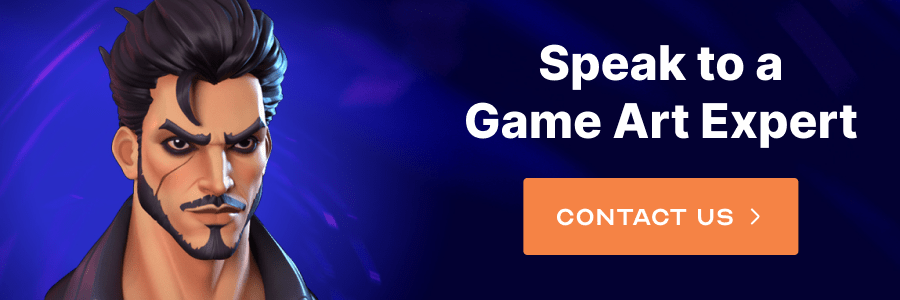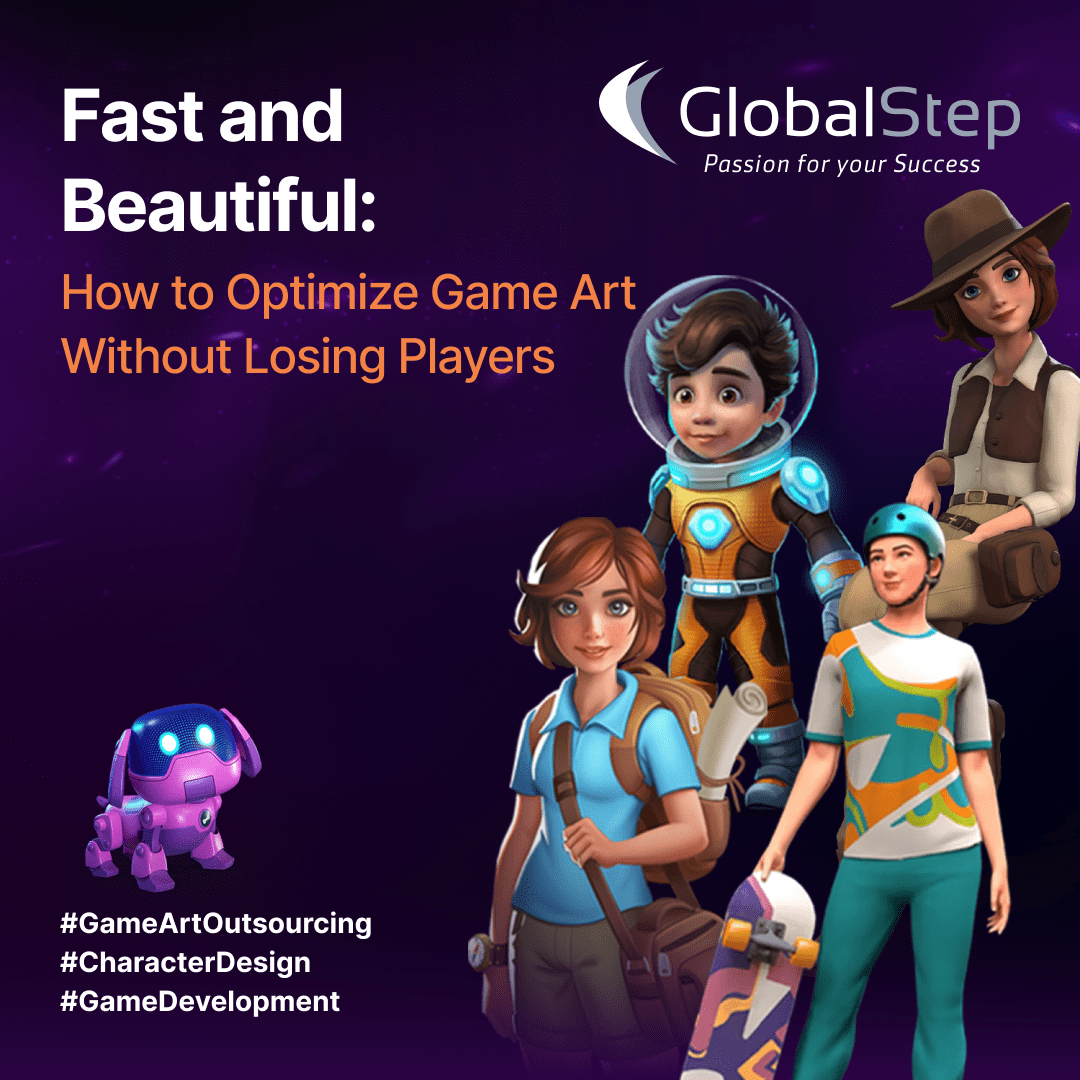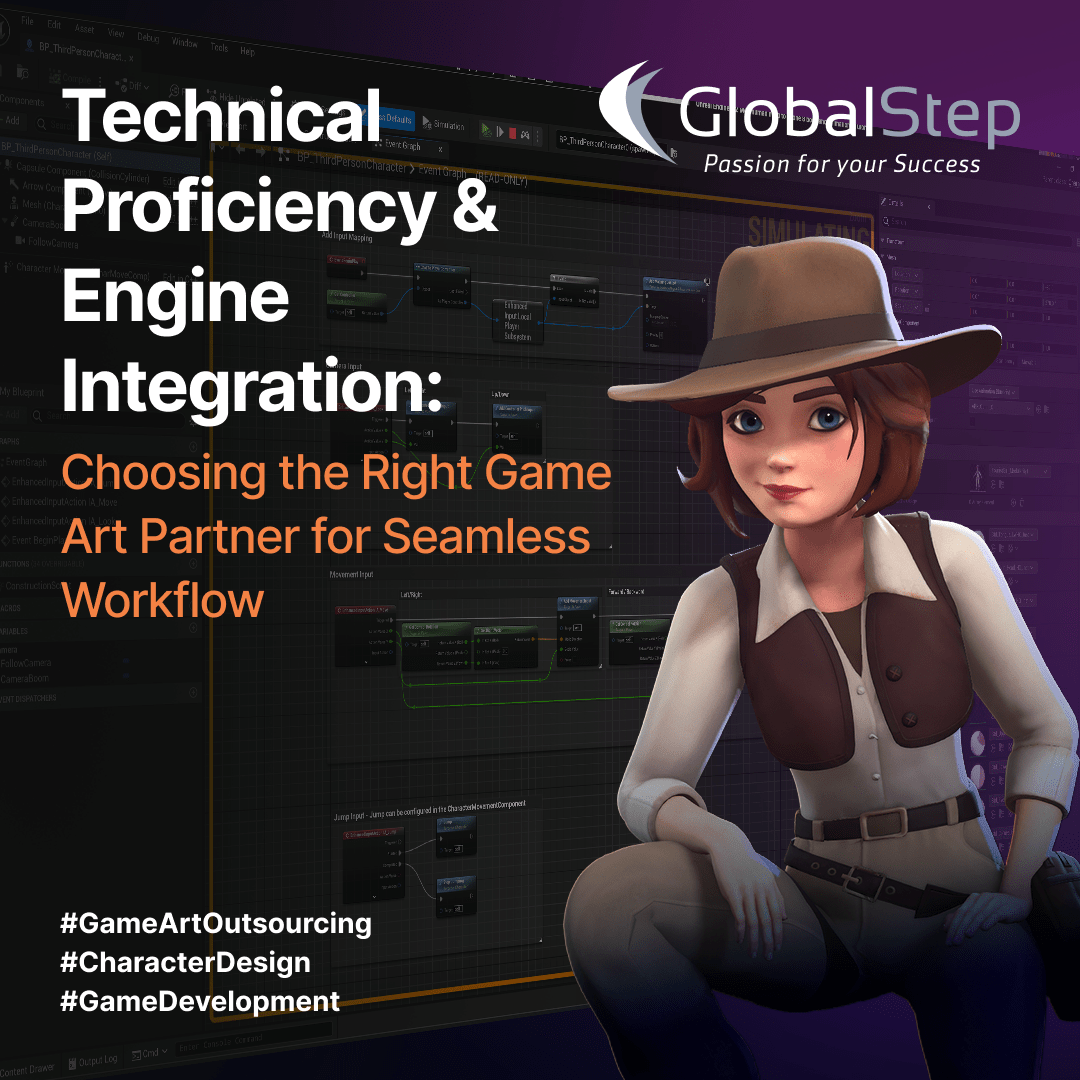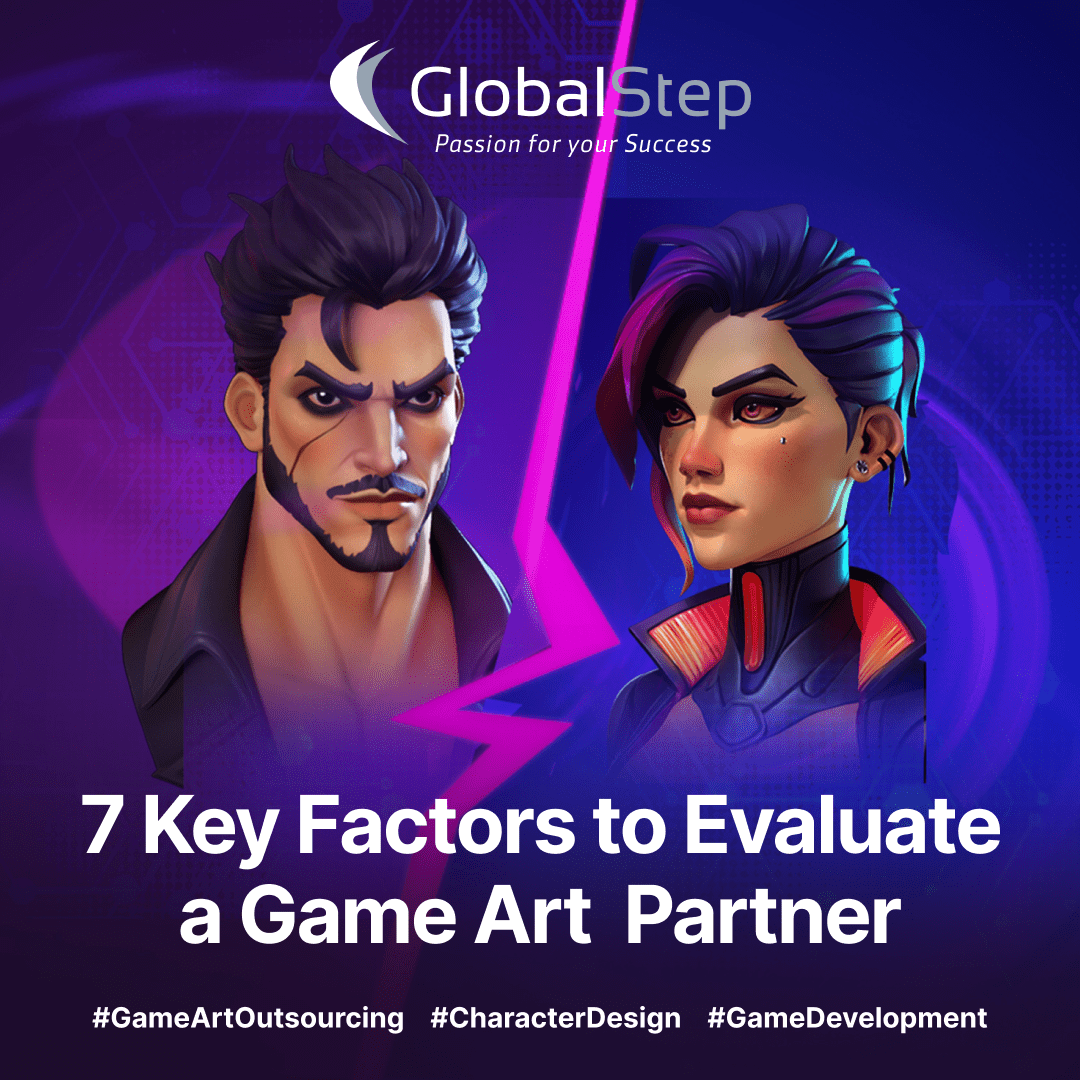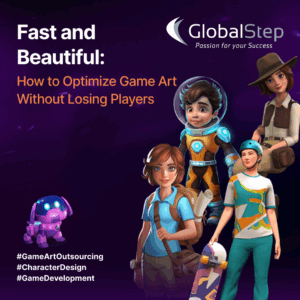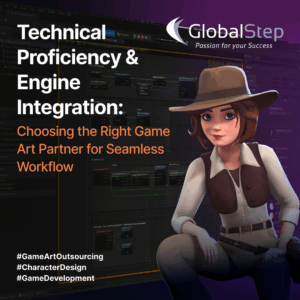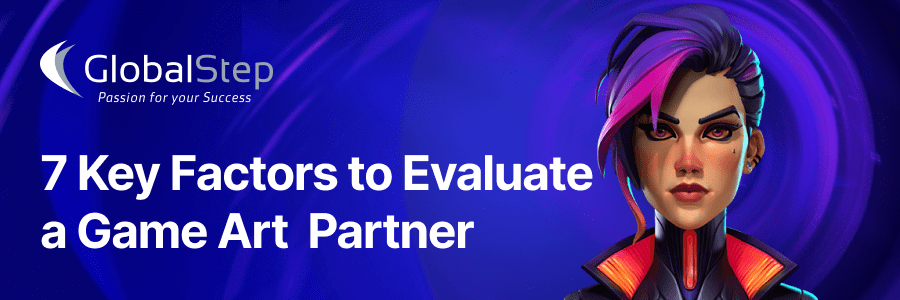
Developing art for a video game is a complex craft. It’s not just about making something look good, but translating your vision into a living, breathing world on screen. That takes passion, experience, and serious talent. One of the biggest challenges is finding a partner who’s just as creatively invested and capable of bringing that vision to life.
In Part 1, we guided you through why game art outsourcing could be a tremendous differentiator for your game design. Part 2 walks you step-by-step through seven key things to consider when looking for the perfect art partner for your game, irrespective of 2D or 3D video game art. By the end, you’ll know the questions to ask, what to watch for, and how to go ahead with confidence when contemplating video game outsourcing companies for your next game.
1) Alignment of Vision & Objectives
A great partner should be able to get on with your creative vision without constant hand-holding. Find out how they tackle your game’s tone, story, and audience. Observe whether they come up with ideas that enhance, rather than dilute your vision. And ensure that your internal team is happy to work with them.
2) Technical Depth of Skills & Applicable Experience
Strong visuals are wonderful, but they also have to integrate smoothly within your engine. Ask to see work done within similar engines and visual aesthetics, and look at their game design portfolio. Check if they are familiar with game art softwares and have a technical understanding of various art tools. Lastly, ensure they can adapt when your pipeline changes, particularly late-stage changes within game development.
3) Clear Communication & Teamwork
Consistent communication is the bedrock of a smooth working relationship. Ask them about their reporting mechanism and how frequently they check in and align with clients. Check if they utilize software like Jira or Slack for staying in line and maintaining efficient communication. Ensure they’ll keep the same core artists on your team, which will guarantee the same quality.
4) Cultural Fit and Working Rhythm
Workflow compatibility is just as crucial as talent. Make sure their work hours align with yours, and whether they respond quickly to feedback. Ensure they prioritize quality, and can provide real-time help and collaboration when necessary.
5) Proactive Problem-Solving and Creative Innovation
The best studios don’t wait to be instructed on what isn’t working; they flag it early and propose remedies. Request concrete examples where they enhanced pipelines or visuals. Ensure they come with new concepts that challenge quality or efficiency, and find out how they work with unclear or fluctuating briefs.
6) Stringent Quality Assurance & Testing
QA needs to be integrated into the pipeline instead of being an afterthought. Investigate how they crosscheck assets ahead of delivery. Ensure they have them check for engine compatibility and stick to established definitions of “done.” And ensure that they use milestone reviews to prevent expensive late-cycle fixes.
7) Flexible Scaling and Resource Agility
You need a team that grows along with your production curve. Find out how they ramp during a crunch or slow down when there is a quiet time. Check whether they provide both dedicated and on-demand resources. And find partners who have juggled changing timelines without breaking a step.
Why Partnering with GlobalStep Makes the Difference
At GlobalStep, we have devoted the past two decades to refining the art of professional assistance for all our clients, from indie creators to AAA Studios, to Top 10 App Store and Play Store franchises. Here’s what makes us different:
- Confidential & Compliant: With over 200 on-time, on-budget NDA-protected releases, our strict methodologies and secure facilities guarantee that neither your IP or software compliance are ever at risk.
- Style Experts on Demand: Our experts adjust exactly to your IP and style guide needs — from each detail and nuance of 3D character design, ranging from bright 2D art to top-of-the-line PBR 3D assets.
- Proprietary Collaboration Pipeline: We integrate with your version-control and project management tools, no more isolated folders or misplaced resources. Our enterprise-grade security standards make it risk-free to do more than creating assets. When hundreds of external assets arrive, your internal team may get weighed down with integrating the expanding library, and that’s where we come in.
- Performance-First Approach: Our technical art team optimizes assets for load times, memory budgets, and platform specifications, ensuring smooth gameplay across devices. Making art directors delighted to see our work is our core skill. Making engineers happy to see the work is a key part of that.
- Flexible Models for Engagement: Ranging from a single concept artist up to a full art outsourcing studio, our large talent pool allows us to scale to meet your needs and ramp up or down resources within days, not months.
Next Steps: Getting Started with GlobalStep
1. Book a Discovery Call
Tell us about your style reference, project scope, and technical requirements so we know what to prioritize.
2. Review Your Tailor-Made Proposal
We’ll develop a plan for resources, a timeline, and a pricing proposal that suits your requirements.
3. Start with a Pilot
Instead of plunging into the whole game design project, begin with a small deliverable (e.g., character concept pack) to get a feel for our process directly.
4. Scale to Full Production
Scale up to full-scope asset development — sets, characters, VFX, UI — with our solid QA support.
